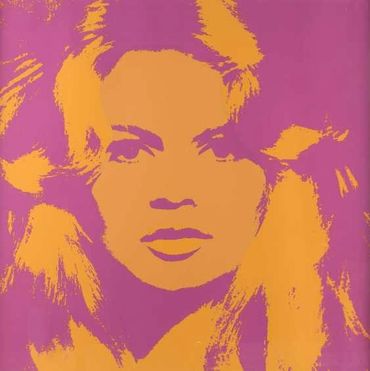Art Movement - Pop Art
Pop Art - (1950s and 1960s)
Pop Art was a vibrant and influential art movement that emerged in the mid-1950s in Britain and gained momentum in the United States during the 1960s
Pop Art Movement
Pop Art was a vibrant and influential art movement that emerged in the mid-1950s in Britain and gained momentum in the United States during the 1960s. It challenged traditional notions of fine art by drawing inspiration from popular culture, including advertising, comic books, consumer products, and mass media. Pop artists sought to blur the lines between "high" and "low" culture, embracing imagery that was bold, colorful, and instantly recognizable. By incorporating everyday objects and commercial aesthetics into their work, they highlighted the growing influence of mass production, celebrity, and consumerism in modern life.
Key figures in the Pop Art movement include Andy Warhol, Roy Lichtenstein, Claes Oldenburg, James Rosenquist, and Richard Hamilton. Warhol's silkscreen prints of Marilyn Monroe and Campbell’s soup cans became cultural icons, while Lichtenstein’s comic book-style paintings used dramatic scenes rendered in bold lines and Ben-Day dots. Pop Art reflected the spirit of its time—playful, ironic, and media-saturated—while also critiquing the superficiality and excesses of consumer society. The movement had a lasting impact on art, design, and advertising, and it paved the way for contemporary artists to explore the intersection of art and everyday life.
Andy Warhol
Andy Warhol (1928–1987)
was an American artist and a central figure in the Pop Art movement, which emerged in the 1950s and 1960s. Known for blurring the boundaries between high art and popular culture, Warhol used imagery from advertising, consumer products, and celebrity culture to create bold, iconic works. His most famous pieces include his silkscreen prints of Campbell’s Soup Cans, Coca-Cola bottles, and portraits of celebrities like Marilyn Monroe, Elvis Presley, and Elizabeth Taylor. By repeating familiar images and embracing mass production, Warhol challenged traditional ideas of originality, authorship, and what could be considered "art."
Warhol's studio, known as The Factory, became a hub of creativity and experimentation, attracting artists, musicians, writers, and socialites. Beyond painting and printmaking, he also worked in film, photography, sculpture, and publishing. Warhol’s fascination with fame, consumerism, and media made him both a mirror and a critic of 20th-century American culture. His famous quote, “In the future, everyone will be world-famous for 15 minutes,” reflects his deep understanding of celebrity and mass media. Warhol’s legacy continues to shape contemporary art, fashion, and pop culture, making him one of the most influential artists of the modern era.












.jpg/:/rs=w:370,cg:true,m)



This website uses cookies.
We use cookies to analyze website traffic and optimize your website experience. By accepting our use of cookies, your data will be aggregated with all other user data.


